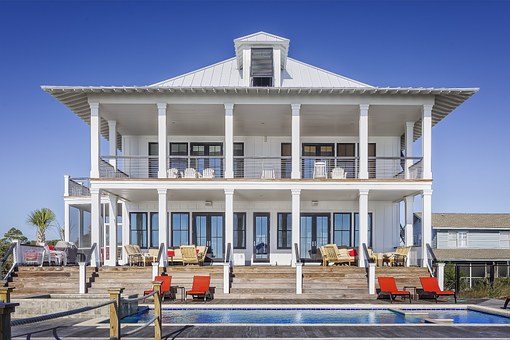Flipping a house successfully depends largely on picking the right place at the right time—which is why veteran flippers keep a mental checklist to help steer them toward homes that are primed to reap a profit. Here, Realtor.com offers seven signs that real estate investors look for when choosing a house to flip.
1. It’s in a neighborhood where homes sell fast
One of the first clues that a house is flip-worthy is that it’s in an area where homes sell quickly. Every extra month you own the house means you’re on the hook for more mortgage payments and maintenance costs. Fast-moving markets generally mean these overheads won’t last long. On a national level, Realtor.com data shows that homes remain on the market for 62 days on average. Yet, in a hot area such as San Francisco, homes typically sell in 25 days; in slow markets such as Albany, N.Y., it will take 81 days.
2. The house meets the 70 percent rule
For a flip to be worth your time, effort and money, you should make between 10 percent to 30 percent return on your investment. To determine your potential return, see if the flip meets the 70 percent rule. Can the house be bought for 70 percent of what it will be worth once fixed up, minus any needed repairs, closing costs and real estate agent fees? For example, if you can buy a house for $110,000 and fix it up for $30,000, you’ll want to sell it for around $200,000 for it to be worth your while.
3. You can price the house right
To get a ballpark figure for how much you can sell a house for once it’s fixed up, one safe rule of thumb is to check the median home price for that market. In Parma Heights, Ohio, the median sales price is $117,000, while at the other end of the range in Manhattan, N.Y., buyers expect to pay $1 million. Of course, this presumes your home is typical in terms of size and number of rooms.
4. The property has more than one bedroom
Don’t buy a one-bedroom house to flip, because most homebuyers are looking for two bedrooms and more. Anything smaller will minimize the demand at resale. Another flip-worthy must is a functional floor plan. For example, you shouldn’t have to go through a bedroom to get to the kitchen.
5. The needed repairs are mostly cosmetic
The physical condition of the home should be fair and correctable without draining your bank account—including a kitchen or bathroom renovation or installing new flooring. Repairs that should give you pause include foundation and structural issues. Tackling these two issues can destroy a renovation budget with overages and stretch the time frame of the flip.
6. Understand what scares home buyers
Most homebuyers touring an open house can deal with a lime-colored wall they need to repaint or one outdated appliance. What many buyers can’t handle, however, are intimidating and pricey projects like replacing an old furnace (which will cost around $4,000), putting on a new roof ($3,000 to $10,000), electrical upgrades ($1,500 and up) or plumbing issues ($1,000 to $10,000). Not only do these issues spook homebuyers, but they also could make the home difficult to finance with lender money.
7. The neighborhood itself doesn’t need flipping
People don’t just live in a house, but they live in the surrounding area as well. A potential flip should be in a good neighborhood with access to transportation and amenities such as parks. Perhaps the biggest indicator of a flip-worthy home is the quality of the schools.

